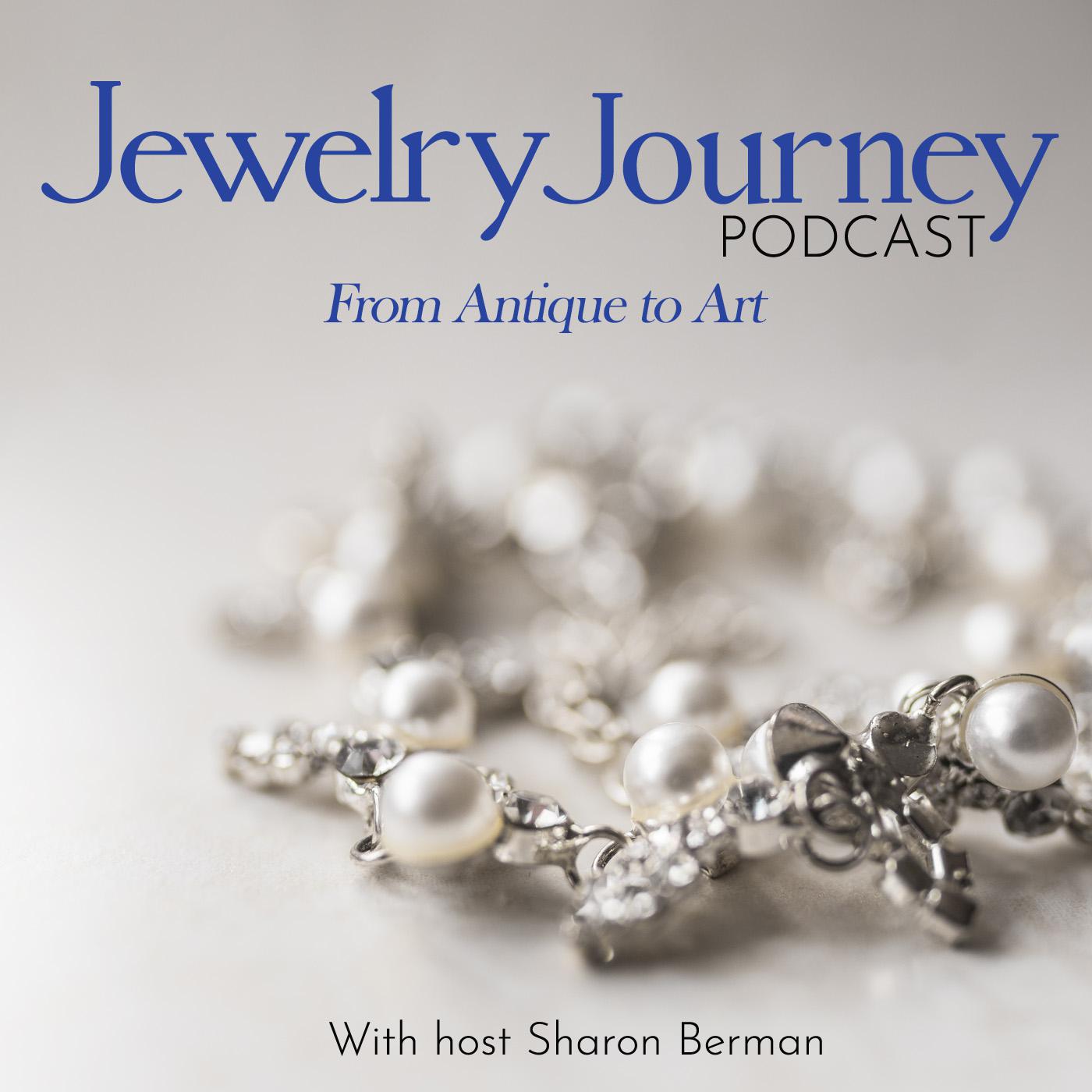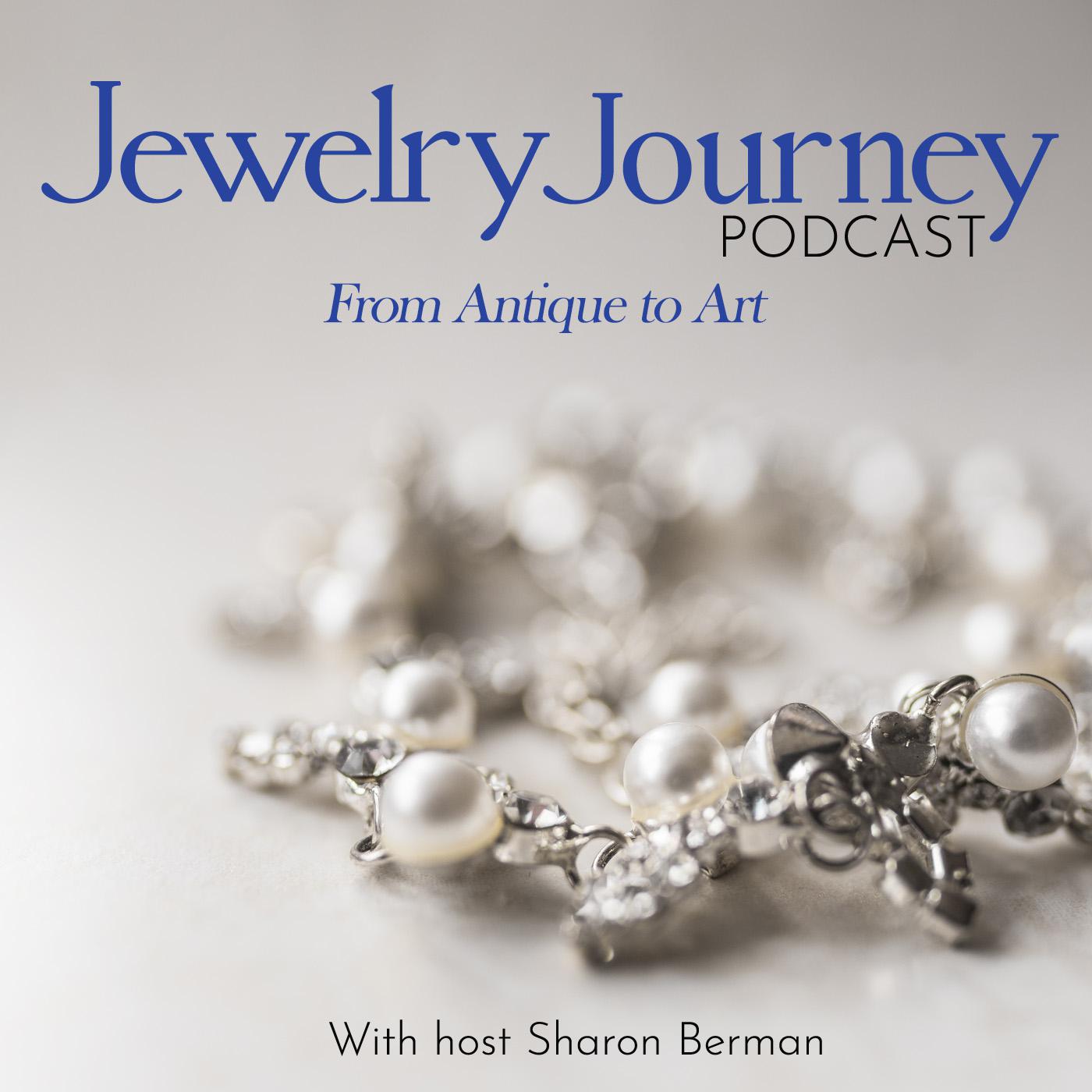Episode 224 Part 2: How Jennifer Merchant Continues the Tradition of Op Art in her Jewelry
Description
What you'll learn in this episode:
- Jennifer's unique process of layering acrylic and art images, and how she discovered her signature technique.
- Why the most important thing a young artist can do is find their voice.
- Why Jennifer rarely uses images her customers request in her jewelry.
- How Jennifer's work ties into the history of pop and op art.
- Why Jennifer sees other art jewelers as inspiration, not competition.
About Jennifer Merchant:
Jennifer Merchant is a studio t based in Minneapolis, MN. She graduated with a BFA in Metals and Jewelry from the Savannah College of Art and Design. She is a full-time artist showcasing her work in galleries, museums and exhibitions. Her work has been published in several national magazines such as American Craft, Ornament and Delta Sky Magazine.
Merchant is best known for her innovative layered acrylic process in which images and prints are layered between solid acrylic. Her work is graphic with clean lines and modern aesthetic. Pieces confound viewers, appearing transparent from one angle of view while showcasing bold patterns and colors from another.
Photos available on TheJewelryJourney.com
Additional resources:
Transcript:
Like the op and pop art that inspires it, Jennifer Merchant's jewelry challenges your eye. Clear from some angles and bold and colorful from others, the jewelry is created by layering acrylic with images from art books. Jennifer joined the Jewelry Journey Podcast to talk about how she developed her technique; how she chooses the images in her jewelry; and why art jewelers need to work together to push the discipline forward. Read the episode transcript here.
Sharon: Hello, everyone. Welcome to the Jewelry Journey Podcast. This is the second part of a two-part episode. If you haven't heard part one, please head to TheJewelryJourney.com.
Today, my guest is Jennifer Merchant. Jennifer was also a guest several years ago. She thought she would be a metalsmith but segued to acrylic jewelry, which is what she has become known for: creative and innovative acrylic jewelry such as necklaces, bracelets, earrings and brooches. They have eye-catching graphics embedded in them. I was also surprised to learn that hand carving is sometimes involved. Welcome back.
When you left college, did you know you were going to have your own business?
Jennifer: Not right away. I think it took me about five years to really get the confidence together to start my own business. I definitely spent that first five years after graduation very lost and not really sure what in the heck I was going to do with my jewelry degree, especially because I went to school in Savannah, Georgia. That's where I made all my art connections and jewelry connections. Moving back to Minneapolis, I was off on my own. I didn't have a community at that point. It definitely was a number of years of wondering, "How am I going to end up using this degree that cost me so much money?"
I had been waiting tables and was increasingly unhappy because I knew I had something different to offer the world. I ended up getting fired from a job. I had been speaking with a friend at work who had another friend that was putting on an art show. She had told me about it because she knew I was an artist. I remember getting fired from the job and calling her up right away, like, "I think I want to do that art show because I need to try to make some money." It went okay, and it inspired me to say, "Jewelry is something you can do and make a living with. Let's give this a shot."
I had to move back home with my mom for a couple of years and cut my expenses way down, because I wasn't going to take out another loan to start a business. I built it very small, very scrappy. I had a second bedroom in my mom's house where I had my workshop, and I started from there doing little local events. That's where it all started.
Sharon: Wow. What's the biggest piece of advice you can give to somebody who's just starting out?
Jennifer: I would say when you're just starting out, really try to find your voice.
Sharon: What do you do? What does one do when they find their voice? For instance, some people have found the voice, but they're homemakers or they work in an office. What do you do when you find your voice?
Jennifer: I think once you know what you want to say, the next step is finding out who wants to hear it. And that is a very hard step, finding your niche and finding your people that resonate with your voice. I think the only way to really do that is to get yourself out there, get your work out there.
I think with the Internet now and how accessible online stuff is, it might be a little easier to get yourself out there through social media, through the Internet, than maybe it was years ago when you had to have a physical presence out in the world. People can start by getting their work out there online and hopefully seeing who is interested, who connects with it, and then finding places in the real, outside world to continue that process and eventually find your market.
Sharon: Do you have people who come to you with the image they want to include already?
Jennifer: Not very often. I've had people ask me about that, but I think ultimately, I have to be drawn to the image specifically in order to be able to incorporate it in a piece. I did have a client that had a specific art piece she wanted in a bracelet for her daughter. That I was able to do because I resonated with the work and it was something that worked well within the form of jewelry.
I've also had requests where someone wants family mementos or something encased in the acrylic. That's a very cool, sentimental thing, but visually, it doesn't really work with my aesthetic as well. I'm not going to do something just because I get asked for it. I also have to be drawn to it enough in order to go through with it, because it is a labor-intensive process and it is an art of passion. If I'm not super excited about the thing I'm making, it's probably not going to turn out that great either.
I have tried to do things early on in my career specifically for a client that just didn't quite work out. We weren't on the same page. I think as you get more into it, you figure out the types of things you can push the boundaries on and the types of things that you can't. When someone's request is something that you can do and make them happy with, and when it's just not something that'll work out, you know.
Sharon: That's interesting. So if somebody brought you their wedding photo, it depends on whether you like the wedding dress or something like that.
Jennifer: Or if it has enough visual interest. I think the thing that makes my work successful is the images that I do use are interesting within a small scale of jewelry, and not all images can do that. I work with a lot of op art and pop art, and there's a lot of visual interest going on in a small space. With a photograph or something more sentimental, that's not always the case. It just wouldn't look as cool as they think it's going to.
Sharon: I've seen comic books used in your work. How did you come to that?
Jennifer: All of the things in my work that look like comic books are actually Roy Lichtenstein pieces. His pop art was inspired by comics, and he reimagined them into huge canvases and paintings. My jewelry does something similar, where I take Roy Lichtenstein's work and images and collect tons of books and rip out those pages and put that in my jewelry. It feels kind of meta. I've actually met some of his descendants and collectors and friends over the years, and a lot of them assure me that he would really appreciate what I'm doing with his work. It's a very similar idea as to how he repurposed art and things that he saw into something new and different.
Sharon: That's interesting. I didn't know that. Did you study art history in college as you were studying jewelry and metal and all that?
Jennifer: Yeah, art history is definitely part of your Bachelor of Fine Arts degree. It wasn't always my favorite class because the art history classes were about art that was ancient and a lot of religious art and that sort of thing. I think I had one class where it was modern art in the 20th century, which, of course, is the most interesting to me.
But that art history background definitely sparked some interest in different art movements and art periods. Art Deco is a very favorite design motif of mine. As I was talking about earlier, I'm very inspired by pop art and op art. I think art history plays a huge role. I never thought at the t
























